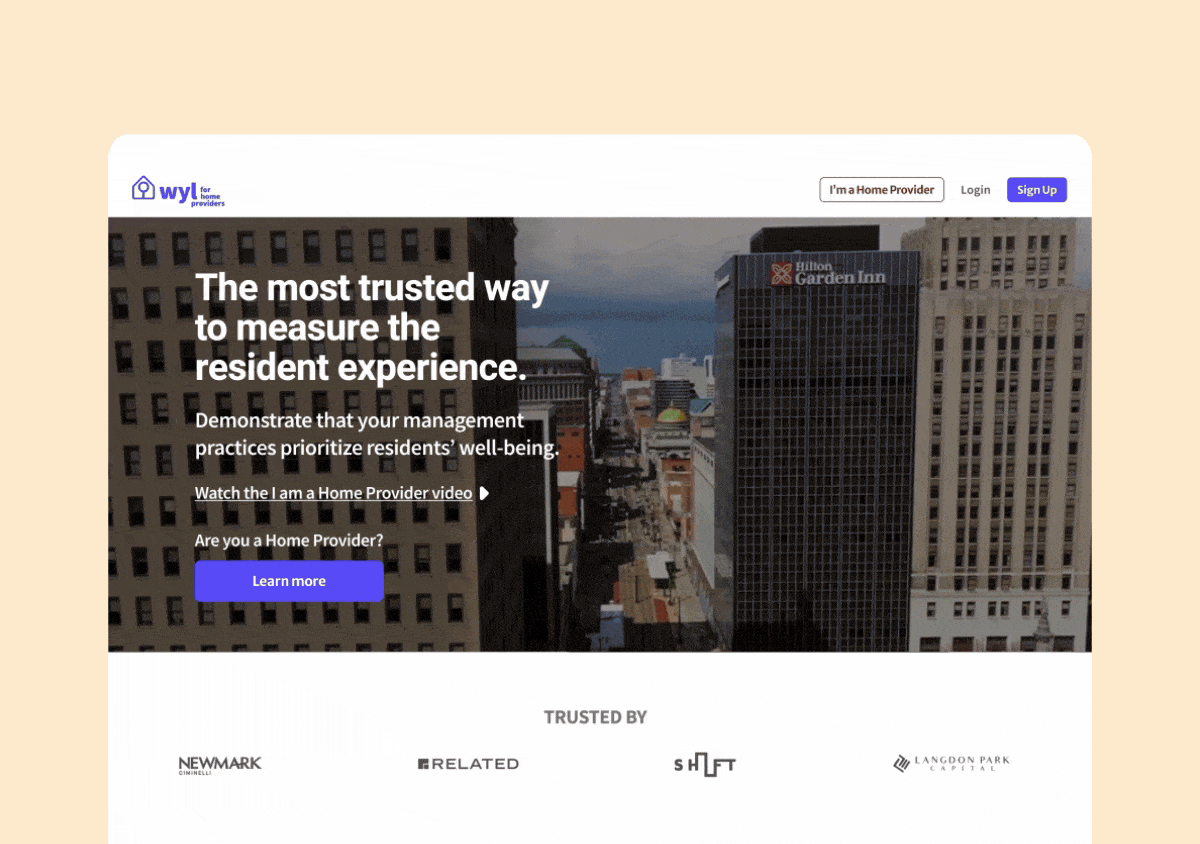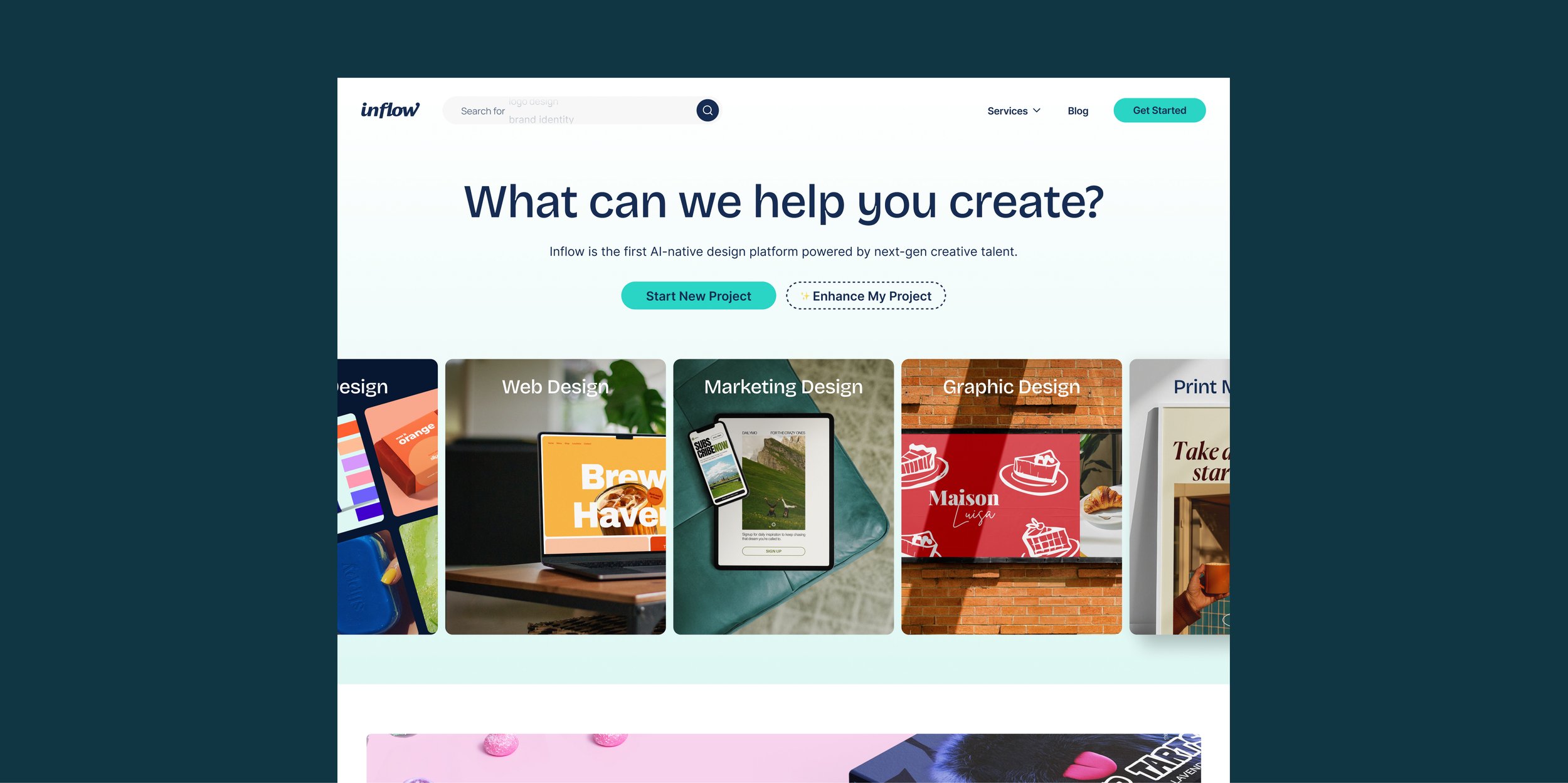Product Design
WhoseYourLandlord (WYL) is a resident and property management insights platform and creator of the Resident Trust Index (RTI), a certification system evaluating resident experience and property conditions in multifamily housing. By providing real-time insights on resident feedback and property data, WYL empowers housing providers, financiers, and government agencies to improve operations, enhance resident satisfaction, and reduce costs.
Notable partners include Related Affordable, Avanath, Enterprise Community Partners, and Nuveen.
Role
UX Designer, Visual Designer
Date
August 2022 - September 2024

Project Snapshot
Role: UX Designer, Visual Designer
Scope: UX and UI for both resident and provider flows, dashboard design, data integrity improvements, review system enhancements
Team: Me (Designer), PM, Developers, Client Partnerships
Strategic Priorities:
Simplify and unify search and property input flows for residents
Empower home providers with self-service tools to manage listings, launch campaigns, and monitor trust signals
Ensure clean, structured data to support WYL’s Resident Trust Index (RTI) and national housing research
Success Metrics:
Minimum 10% resident review completion per property to validate trust index scoring.
Impact
A product built to scale trust, now informing national housing policy
The features and flows designed in this project directly contributed to WYL’s Resident Trust Index (RTI)—a groundbreaking standard for measuring trust, satisfaction, and living conditions in the multifamily housing sector.
In 2024, the platform and its data framework became the core of a national study supported by the Walmart Foundation, Multifamily Impact Council, Berkadia, and the National Multifamily Housing Council (NMHC).
“The WYL platform doesn’t just support residents — it’s giving voice to millions of renters and redefining how trust is measured in housing.”
National Study Highlights and Key Findings
Over 21 leading housing organizations took part, including:
Related Affordable
Avanath Capital Management
Enterprise Community Partners
Nuveen Real Estate
These are some of the most influential players in the affordable and market-rate housing ecosystem.
71% of residents said their housing provider had a positive impact on their lives
83% planned to renew their lease
The biggest driver of satisfaction? Trust, communication, and responsive on-site teams
The study helped highlight disparities in affordable housing conditions, offering actionable pathways to equity
WYL for Residents
Redesigning property search to reduce friction and boost participation
The original search experience was clunky and frustrating. Users had to enter both property name and zipcode — which often didn't exist for lesser-known listings. As a result, search success rates were low and property discovery was tedious.
Led UX improvements for search and add-property flows
Conducted secondary research and pattern analysis
Designed wireframes and collaborated with engineers on implementation
My Role
Design Process
Problem Identification: We identified search friction through multiple data points - high drop-off rates at the search step and direct feedback from residents expressing frustration when they couldn't find their properties. Many users were abandoning the flow because lesser-known properties didn't appear in results when searching by name.
Research & Validation: Analysis of user behavior patterns showed that the two-field requirement (property name + zipcode) was the primary bottleneck. Users often knew their address or general location but not the exact property name in our system.
Solution Development: The single search bar with Google Places API integration was designed to capture the broader range of search behaviors we observed, allowing users to find properties through multiple entry points rather than requiring specific naming conventions.
Key Improvements
Replaced the two-field form with a single, smart search bar
Integrated Google Places API for real-time results and verified data
Enabled search by city, address, or zipcode — no name required
Results auto-sorted by proximity and community rating
Add Property Flow Redesign
We also overhauled the add-property flow to better sync with the new Google-integrated search logic and reduce errors across the system.
The search improvements revealed a secondary problem: when users couldn't find their property, they needed a seamless way to add it themselves. The original add-property flow was disconnected from the search experience, leading to duplicate entries and inconsistent data. By integrating the same Google Places API logic into the add-property flow, we created a unified system that maintained data integrity while reducing user friction.
Users could now add properties manually, starting with a smart search to avoid duplicates
Every listing was linked to a Google Place ID
Step-by-step validation helped users confirm key data and reduced erroneous entries
UI Enhancements
"Add Property" CTA was moved into clear, visible entry points:
Inline prompt: "Don't see your property? Click here to add it."
Embedded inside the search dropdow

WYL for Home Providers
Giving landlords the tools to act, not just observe
Before this redesign, home providers could only view analytics passively. There was no way to add properties, message residents, or launch campaigns — limiting the platform's impact as a feedback loop.
Led UX for the Home Provider dashboard experience
Designed flows for individual and bulk actions
Created wireframes and validated logic with internal stakeholders
My Role
Our goal: create a seamless self-service experience for housing providers. We focused on enabling property uploads (individually and in bulk), resident outreach, and campaign launches — all from a single, intuitive dashboard.

What We Designed
Manage Properties Page
A single page where providers can:
View and search all listings
Add/edit property details
Track engagement metrics
Added support for both individual and bulk CSV uploads
CSV validation steps ensured clean data ingestion and minimized support tickets
Add Residents Flow
Providers could now launch outreach campaigns for reviews or trust scores
Allowed for proactive, ongoing reputation management
Resident Engagement Tools
Why This Matters for the Product
The WYL for Residents and Home Providers features — including property management tools, review campaigns, and trust reporting — directly fed into this effort. The redesigns allowed providers to:
Launch more targeted review campaigns
Collect cleaner, standardized data
Benchmark trust scores across properties and regions
Proactively address resident pain points
By making trust measurable, WYL helped reposition landlords as active participants and gave renters a louder, data-backed voice in housing decisions.
Small UX shifts — like smarter search and clearer CTAs — had a big impact on engagement
Home providers want agency, not just insight — giving them better tools elevated the entire ecosystem
Designing for data integrity paid off downstream in national policy impact
Good design helped reposition trust as a two-way street — not just a metric, but a dialogue
Key Takeaways



















